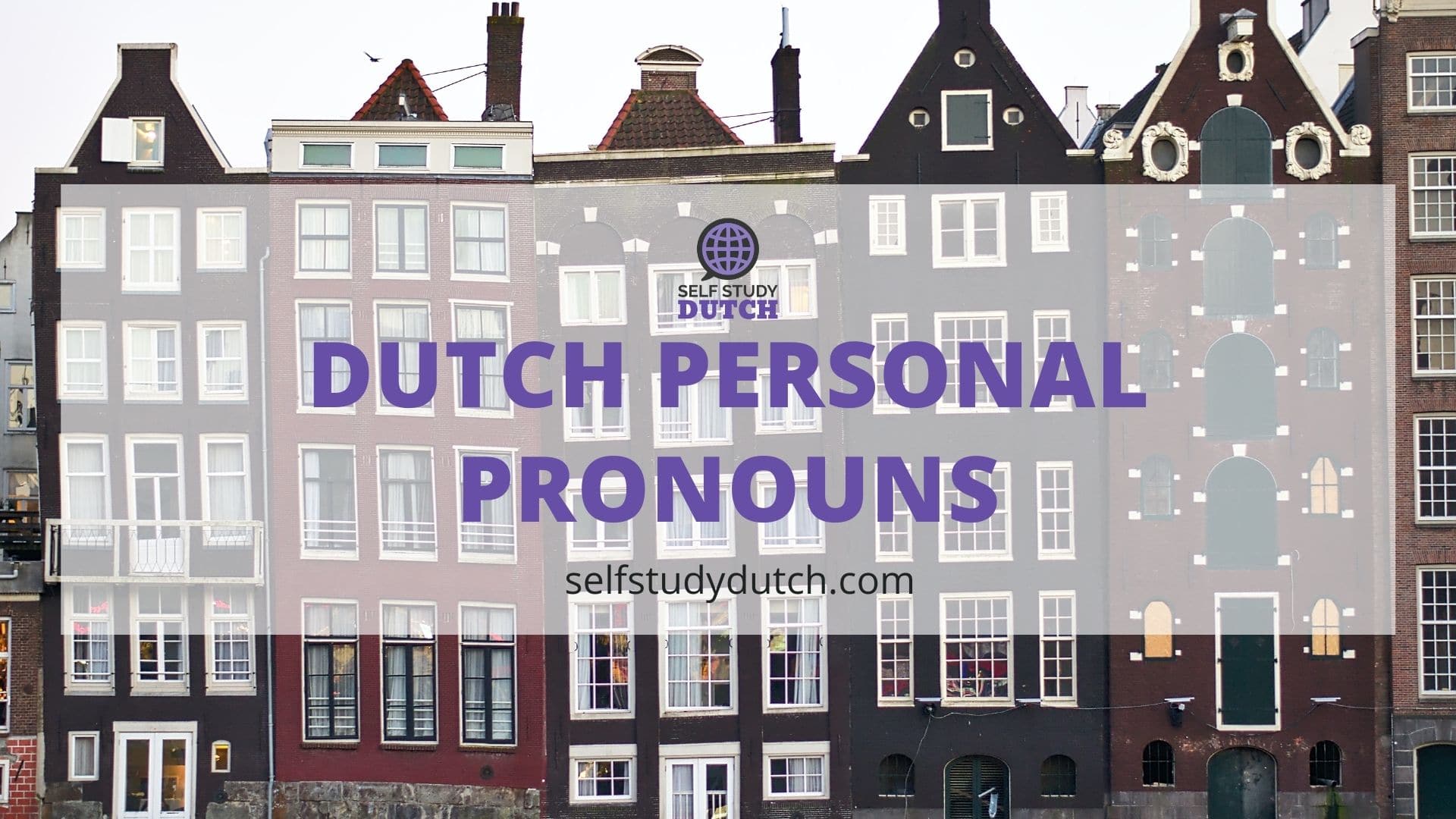The purpose of a pronoun is to replace the noun in a sentence. When we say the “The teacher explains the problem to the students” and we want to continue talking about that teacher we do not repeat “the teacher” in the next sentence. We replace the teacher with “he” or “she”. “She is going a great job” or “He makes it easy to understand”. In that case, we are using a subjective personal pronoun. Subjective personal pronouns are always the subject of the sentence.
In Dutch, you have to remember most personal pronouns have two forms. One is written and used in the stressed form, the other is informal and used in unstressed positions. Let us explain that better in the following table
| English | written forms /stressed | every day speech /unstressed |
| I | ik | ‘k |
| You | jij | je |
| You Formal | u | – |
| He | hij | – |
| She | zij | ze |
| it | het | ‘t |
| we | wij | we |
| you (pl) | jullie | – |
| they | zij | ze |
Let’s look at the photo. For the example we will use the verb eten which means to eat.

If you are in the photo and you are eating you say
I am eating
Ik eet
You eat.
Je eet.
For the mother, it will be
She eats
Ze eet.
He eats
Hij eet.
It eats
Het eet.
And in the plural form
We eat
Wij eten.
You eat
Jullie eten.
They eat
Zij eten.
I am sure you noticed that to distinguish between zij in the meaning of she and the meaning of they you need the help of a verb.
Now let’s practice those pronouns, shall we!
Photo by Aquiles Carattino on Unsplash

